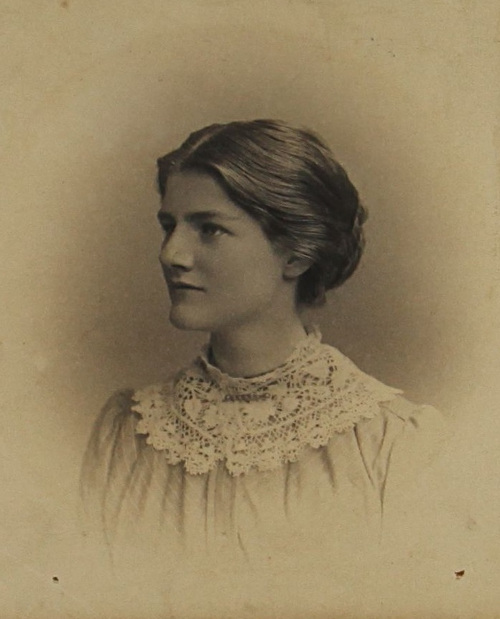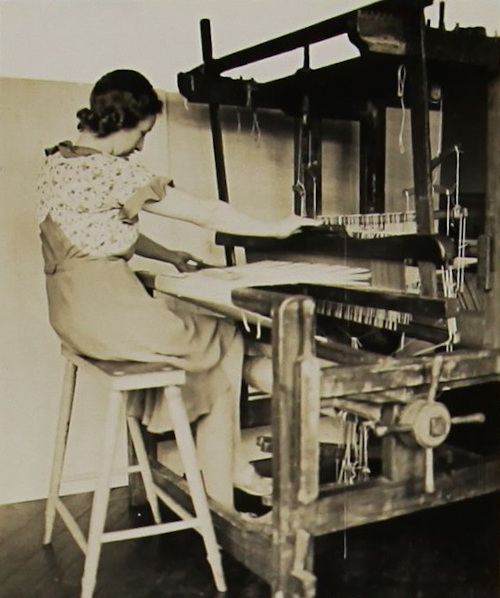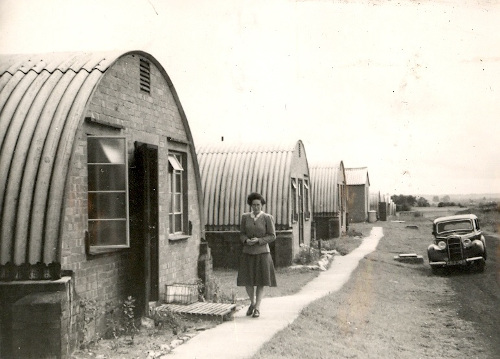Archives Hub feature for December 2019
Dorset House School of Occupational Therapy, the first School of Occupational Therapy in the UK, opened on New Year’s Day 1930, but the inspiration for the School can be traced back to a festive morning in a hospital ward. Dr Elizabeth Casson (1881-1954), the School’s founder, was working in a psychiatric hospital when she realised the therapeutic benefits enjoyed by patients who were presented with tasks and activities rather than mere convalescence:
“When I first qualified as a doctor …I found it very difficult to get used to the atmosphere of bored idleness in the day rooms of the hospital. Then, one Monday morning, when I arrived at the women’s wards, I found the atmosphere had completely changed and realised that preparations for Christmas decorations had begun. The ward sisters had produced coloured tissue paper and bare branches, and all the patients were working happily in groups making flowers and leaves and using all their artistic talents with real interest and pleasure. I knew from that moment that such occupation was an integral part of treatment and must be provided.”
Quoted in The story of Dorset House School of Occupational Therapy 1930 – 1986

This Road to Damascus experience was reinforced by Dr Casson’s dealings with Dr David Henderson, who had established a small Occupational Therapy department at Gartnaval Hospital, Glasgow and visits to American hospitals – notably Bloomingdale Hospital, New York and the Boston School of Occupational Therapy – in the mid-1920s.

With the seed sown, Dr Casson requested and received a loan of £1,000 from her actor brother, Sir Lewis Casson, and bought the first Dorset House in Clifton, Bristol. The School began life as part of a nursing home for the treatment of patients suffering from neurotic and psychotic disorders. Consequently, for the first three years the bulk of the clinical experience offered to the students was psychological. Dr Casson, though, never lost sight of the physical aspects of OT and by 1939 she was able to open an Occupational Therapy Department at Bristol General Hospital, offering ward work and treatment for patients with cardiac conditions. For the students, clinical practice was obtained largely with Dr Casson’s own patients. Therapy at this time would invariably cover such diverse activities as netball, country dancing, theatre, gardening and picnics, alongside the more traditional crafts so often associated with OT, such as weaving and needlework.

Then came the War. Bristol became the target for German bombers and the School was forced to literally go underground, with classes moving into the cellars. Finally, it became impossible for the School to carry on in its present location, and the School moved to Barnsley Hall Hospital, Bromsgrove, which had been created as part of the Wartime Emergency Medical Service. One major development at this time was the establishment of Auxiliary courses. The Ministry of Health was keen that the School should run training courses to ensure a rapid supply of workers for other hospitals. Some training was offered to established professionals (nurses, teachers, physiotherapists). Other candidates without qualifications were offered brief courses to enable them to act as Auxiliaries to better-qualified colleagues. One of the highlights of the Bromsgrove years was the visit of the Princess Royal, who met with Dr Shepherd, Medical Superintendent of Barnsley Hall, and the students. With the end of the War, so came the end of Dorset House at Bromsgrove. The EMS Hospital was to close and the expanded School had outgrown its old Bristol premises. Once again, Dorset House was on the move.

In 1946 Dorset House moved into hutted premises situated in the grounds of the Churchill Hospital, Oxford. The move to the Churchill site was far from easy. With the War only recently ended there was no labour available to carry out the necessary refurbishment of the huts, which had until recently been used to house Italian Prisoners of War. Removing pin-ups and graffiti was all part of the moving process! Because OT had more than proved its worth during the War, the need for therapists continued to grow and demand out-stripped supply, so the School restructured its courses to allow for two intakes per year. Further changes took place in the curriculum when the Association of Occupational Therapists revised the syllabus to provide a new qualification in 1954.

By the end of the ‘fifties it was obvious that the School could not continue with its current accommodation. Cracks were appearing in the (temporary) huts and weather-proofing was starting to prove impossible. Then, in 1961, a property on the London Road, Oxford, came onto the market and the School purchased it for £25,000. The money for this (and the necessary alterations) was raised by an appeal which saw donations from past students, local industry and the local public, who flocked to fund-raising events such as a poetry reading by Sir Lewis and Lady Casson (Dame Sybil Thorndike). The new School was officially opened in 1965 by HRH The Princess Marina, Duchess of Kent.
In 1992, the School became part of Oxford Polytechnic (located just down the road from Dorset House), which was conferred with university status later the same year – and renamed Oxford Brookes University. With the School came the Dorset House Archive, which is now held in the University’s Special Collections and Archives.
The Dorset House Archive includes papers relating to Dr Casson and the Dorset House Principals, administrative and exam papers, photographs, ciné films, and scrap books created by those who taught and studied at the School. The Archive has been made accessible thanks to a generous grant from the Elizabeth Casson Trust, which has enabled book stock to be catalogued, the scrapbooks to be conserved, and primary sources to be digitised. 2020 marks the 90th anniversary of the School and we look forward to celebrating Elizabeth Casson’s legacy through the archival record.
Special Collections Team
Special Collections and Archives
Oxford Brookes University
Related
Papers of the Dorset House School of Occupational Therapy, 1919-2005
Held by: Oxford Brookes University Special Collections and Archives
Records of Gartnavel Royal Hospital, Glasgow, Scotland, 1811-2002
Held by: NHS Greater Glasgow and Clyde Archives
Sybil Thorndike and Lewis Casson Archive, 1865-1971
Held by: V&A Theatre and Performance Collections
Browse all Oxford Brookes University Special Collections and Archives descriptions available to date on the Archives Hub
All images copyright Oxford Brookes University Special Collections and Archives. Reproduced with the kind permission of the copyright holders.
